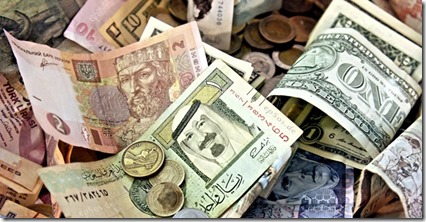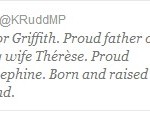The Forex market has some of the highest potential for profit in the world. It’s also easily accessible – anyone can trade Forex from their laptop or smartphone.
Photo courtesy of Epsos.de
But there is a steep learning curve: on average, private traders lose money for the first two years at least.
What is Forex?
Forex is short for Foreign Exchange. Forex trading is the speculative buying and selling of national currency for profit.
Since 1971 currencies have floating values, i.e. their value is relative to other currencies rather than pegged to a tangible asset – how much gold is in the central bank’s vault. This means their values go up and down, and these movements can be exploited for profit.
At its simplest, this means trading £65 for $100 and waiting until either the dollar strengthens or the pound weakens, and trading your $100 for £70 at the new rate. The trick is watching economies and predicting whether currencies will strengthen or weaken.
Currency pairs
Since currencies are all relative, every trade involves buying one currency and selling another. As such, all currencies are quoted in pairs. For example USD/GBP (US Dollars and British Sterling) and EUR/JPY (Euros and Japanese Yen). These express the value of any given currency.
The first currency in the pair is the ‘base currency’ or ‘long’, and is the currency you’re buying, and the second is the ‘quote currency’ or ‘short’, against which the base is valued, and is what you’re selling. So in the USD/GBP example, you’re buying US Dollars and selling British Sterling at a rate of £0.65 to the dollar (at the time of writing).
Forward trades
A forward trade is buying currency at a pre-agreed rate on a future date, regardless of what the rate on that day is. By speculating on the future rate, profit can be made. If the currency is worth more on the day of the trade, the buyer wins. If it’s worth less, the seller wins.
For example, I agree to buy $100 from you for £65 next Tuesday. On Tuesday the rate is £0.70 to the dollar. I can now sell my $100 that I just bought for £65 elsewhere on the market for the current rate of £70. I made a profit of £5, you made a loss of £5.
Carry trades
Carry trades are one of the most popular Forex trading strategies. In a carry trade, the trader seeks to exploit the interest difference between the two currencies in a pair (the ‘yield spread’) as well as capital accumulation.
Every currency is pegged to an interest rate set by the national central bank. At the time of writing, the Bank of England base rate is 0.5%. When buying currency, you receive interest payments, when selling, you pay interest. The first goal in a carry trade is to invest in a currency pair with a positive yield spread i.e. buy currency with a higher interest rate, and sell with a lower.
Currently the USD rate is 0.25%. So, if buying GBP/USD, you would have a positive yield of 0.25% – the difference between the two rates. If you were buying USD/GBP you would have a negative yield of 0.25% – you’re paying out more interest than you’re making.
The second goal is to buy a pair where the yield spread is set to increase. Pick a currency pair where you buy currency with an interest rise, sell an interest rate fall, or ideally both.
The third goal in a carry trade is to successfully predict a rally, so you also experience a capital gain.
For example, between 2003 and 2004, the AUD/USD currency pair offered a positive yield of 2.5%. In the same period, the value of the Australian Dollar rose 56 cents, closing at 80 cents. This represented a 42% appreciation in the currency pair, and meant that traders and hedge funds who were in this currency pair made huge capital gains, as well as profiting from the interest rate differential.
Leverage
One of the chief reasons Forex trading can be so profitable is that it’s a highly leveraged market: ratios of 100:1 are not uncommon i.e. you buy $100 for $1 of capital.
Broadly speaking, leverage is betting against future profits. In its simplest form, you borrow money to make a trade based on your prediction of how that trade will go. If it goes in your favour, you make a much higher return than if you only invest your own capital. If it goes against you, you make a much higher loss. Every transaction is amplified when leveraging.
The returns in Forex trading can be very small without leveraging. Caution should be exercised, but leveraging should be used. Set a rule for how much capital you’re willing to risk with each trade. A good rule of thumb is never to risk more than 3% on a single trade.
Forex trading is fast moving and complex. There is a steep learning curve, but the rewards can be enormous.
Penny Atkinson writes about various financial topics including saving money, debt issues and forex education. For more information about forex trading visit http://gomarketsaus.com/.







Leave a Reply
You must be logged in to post a comment.